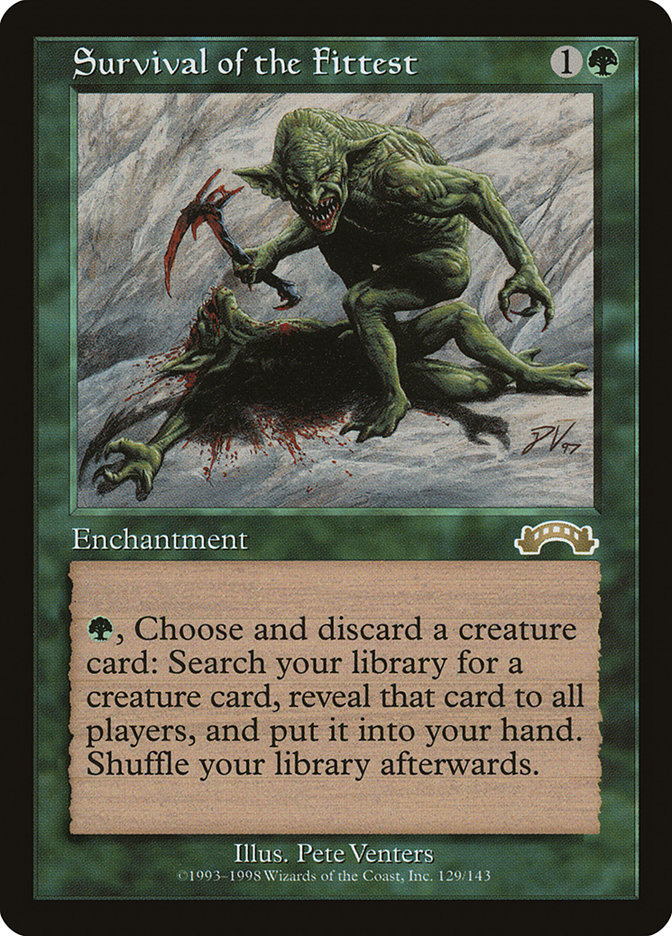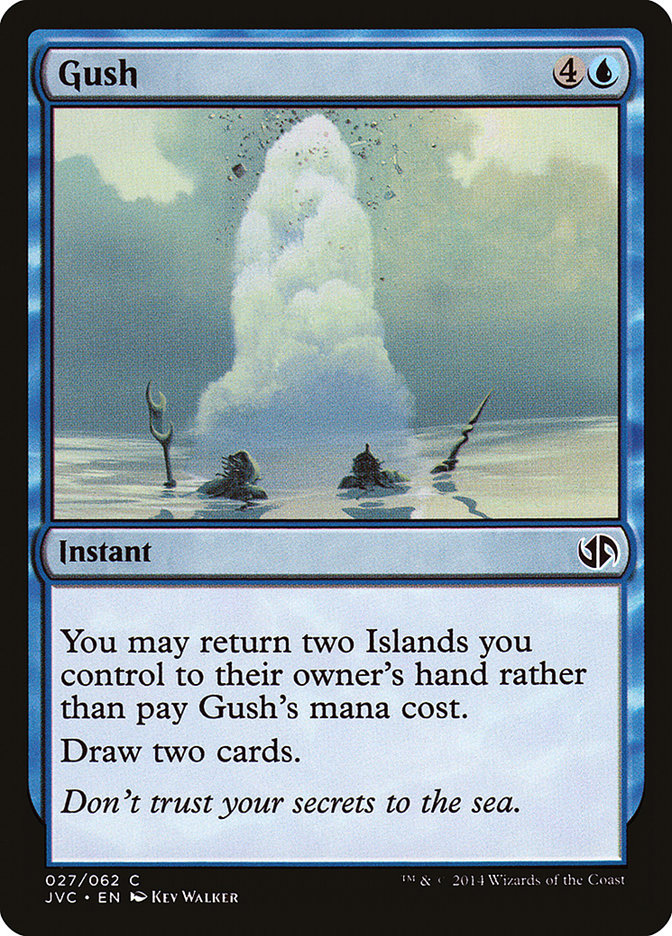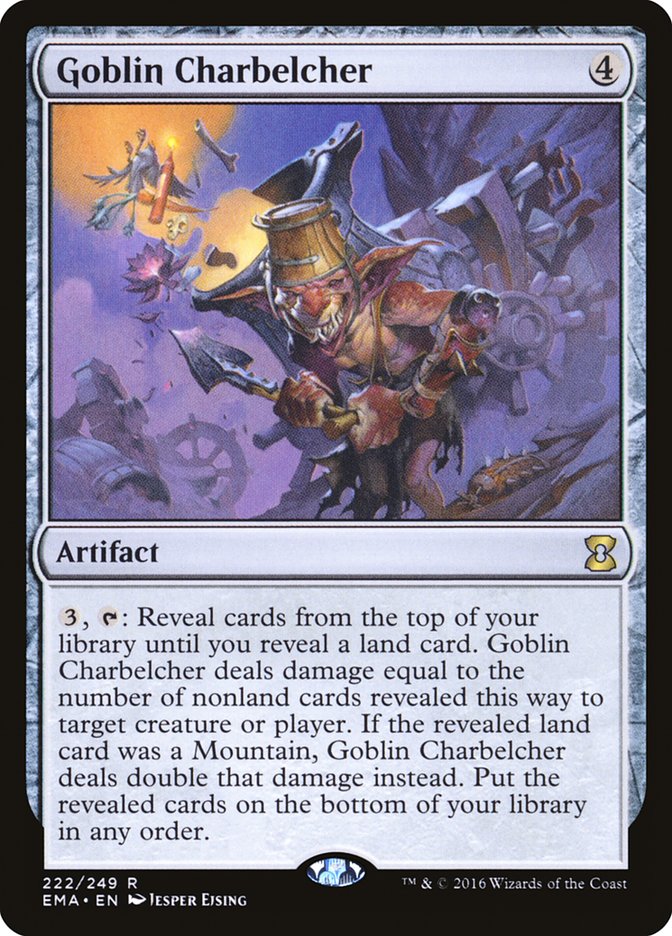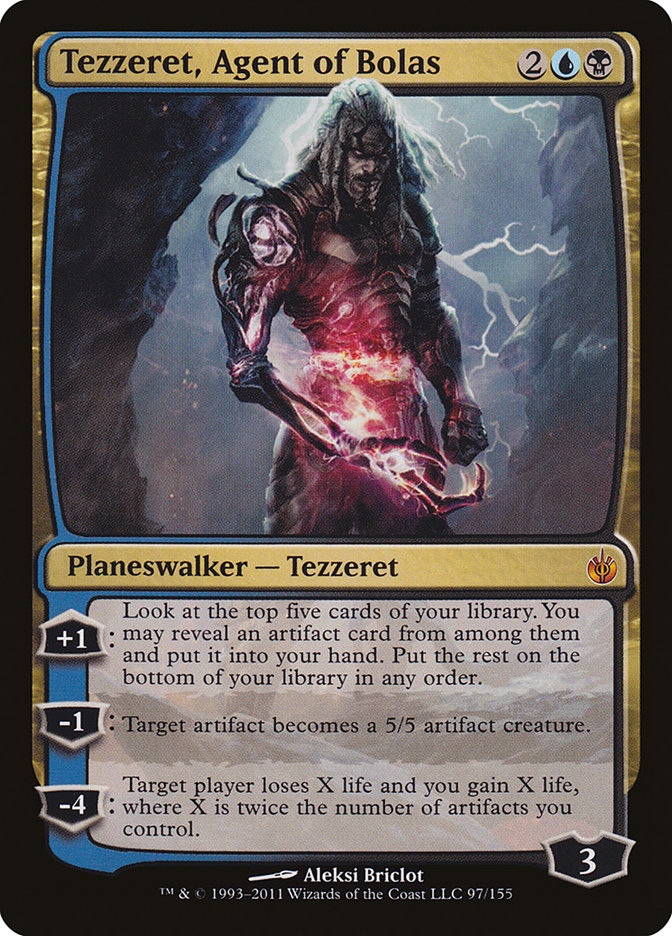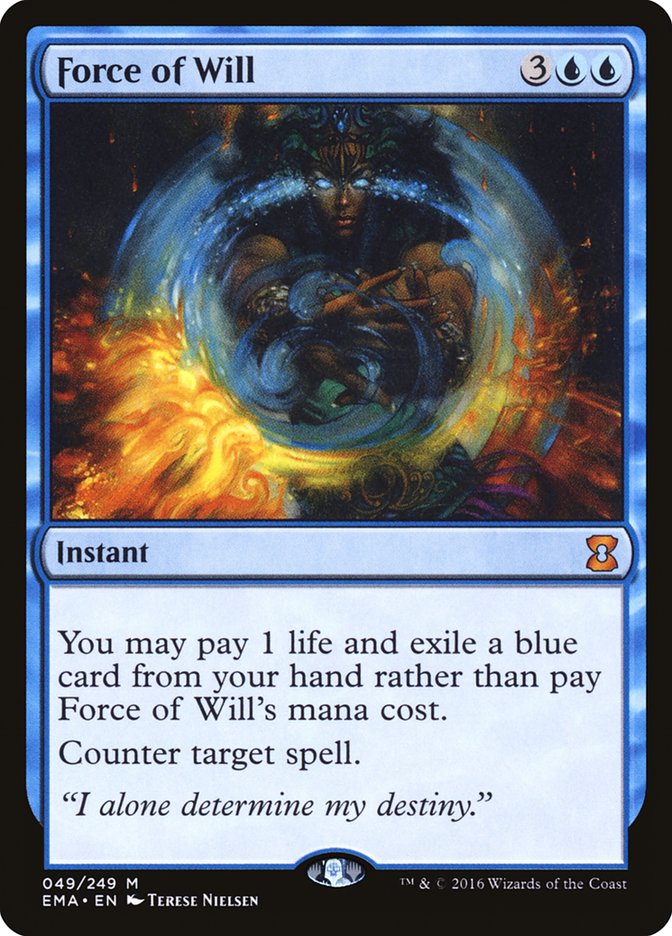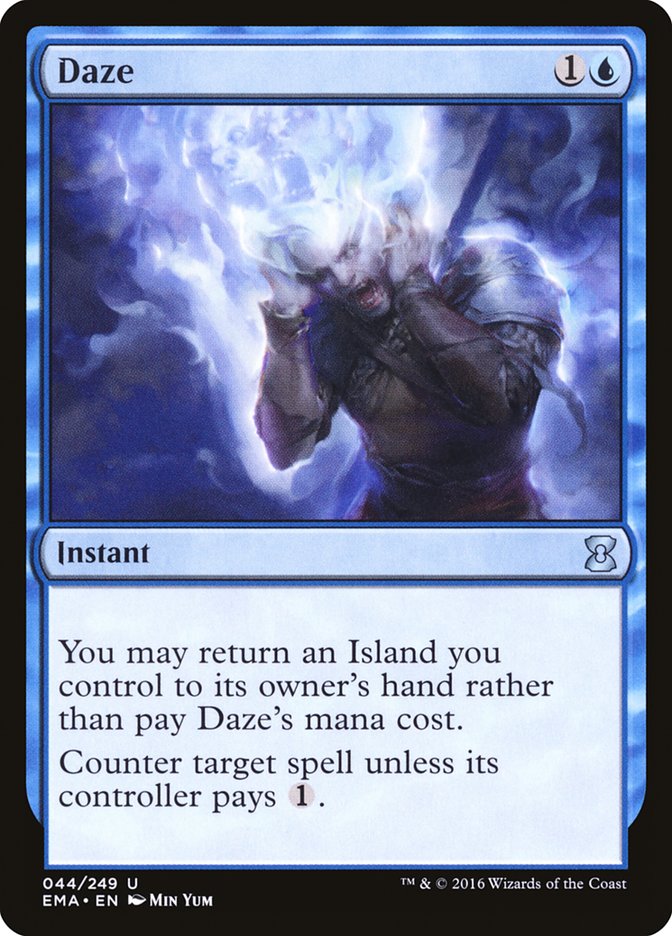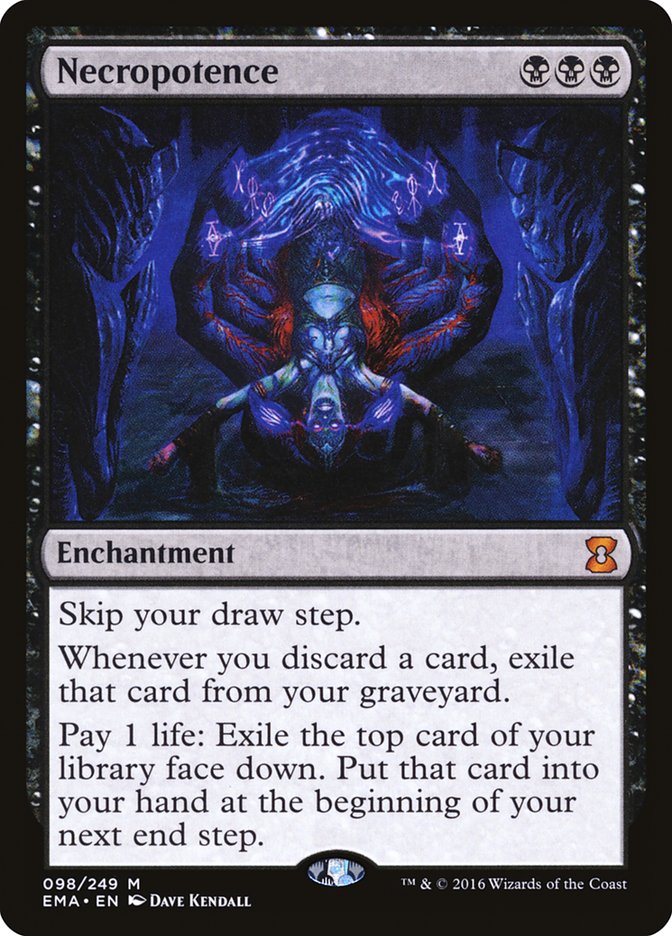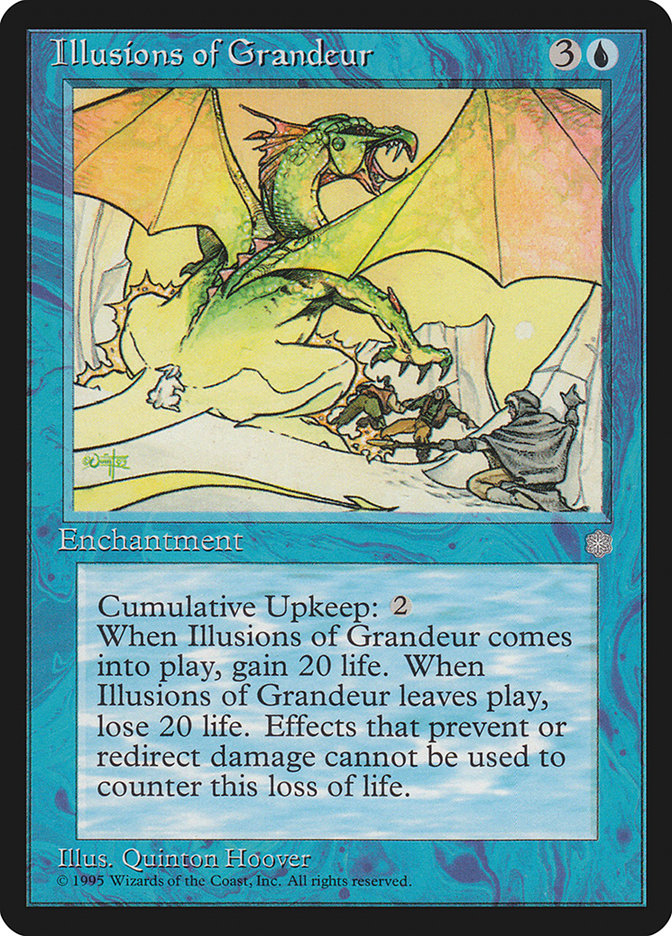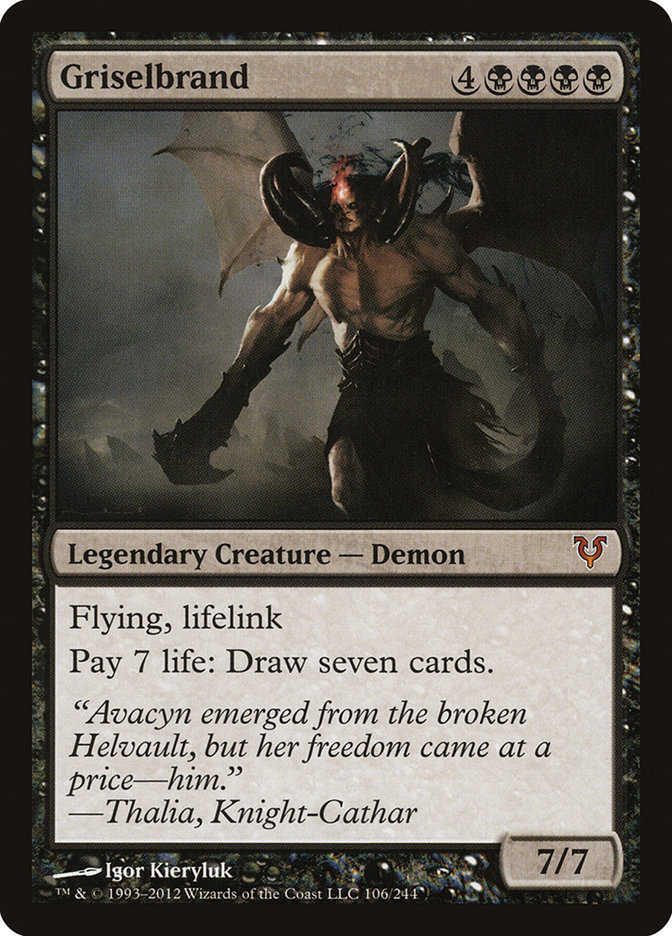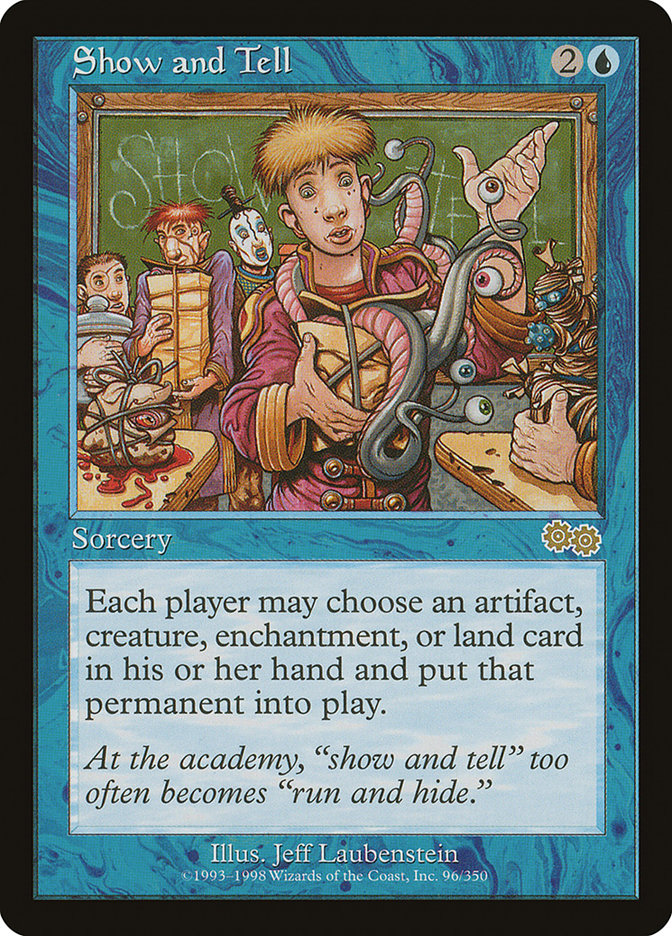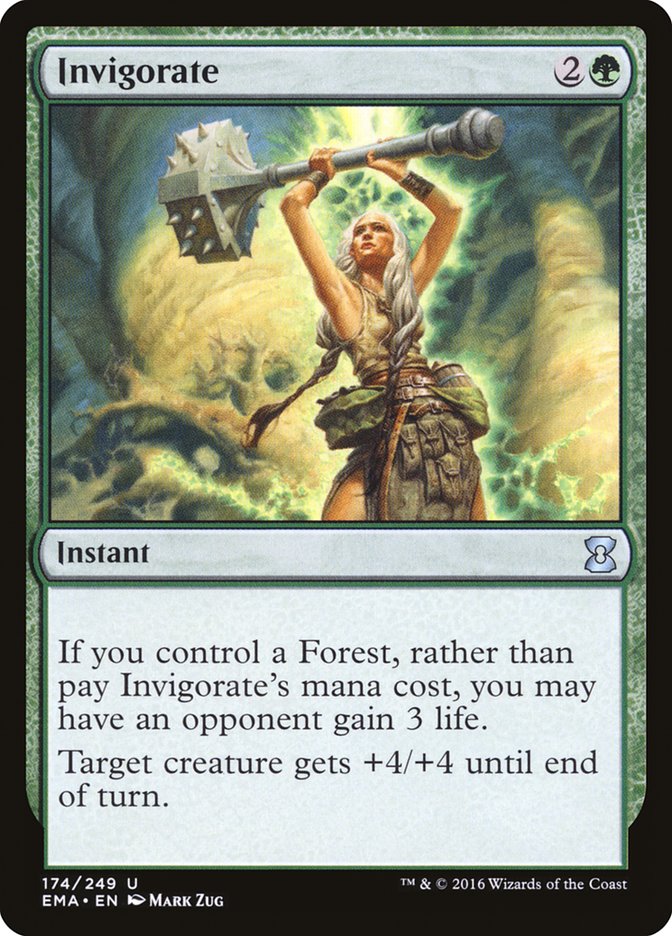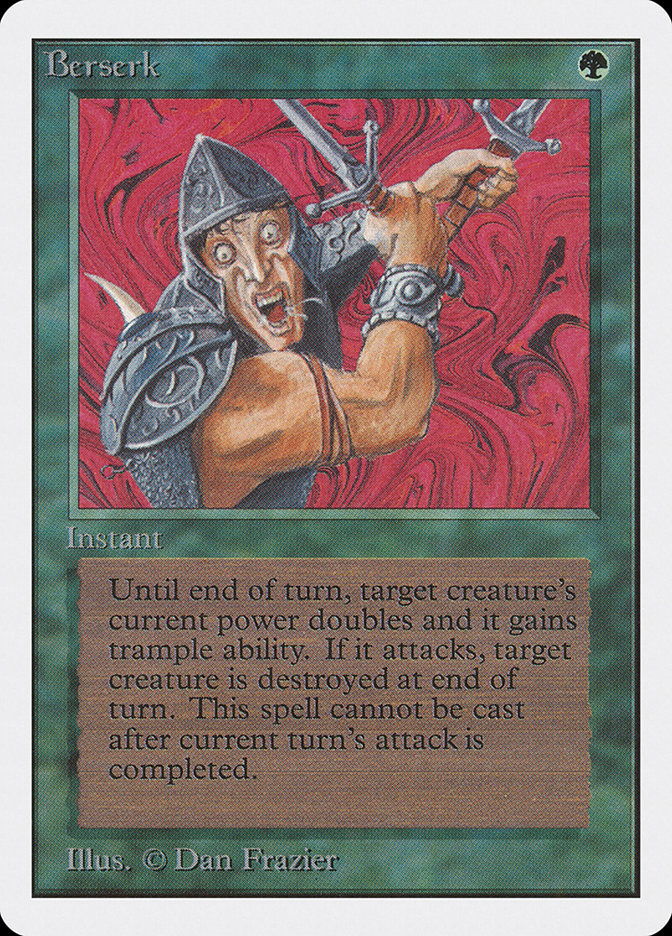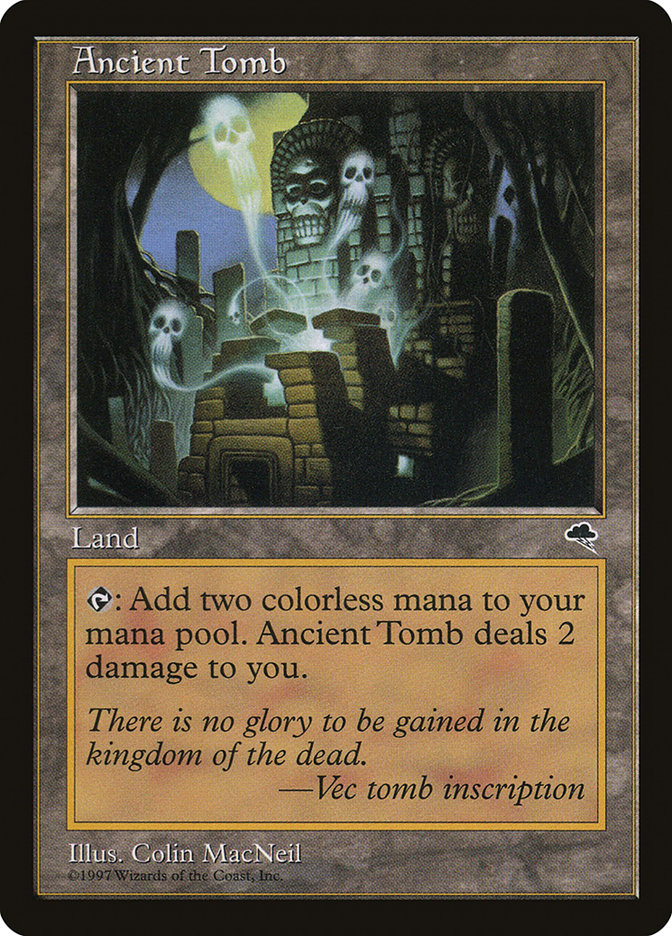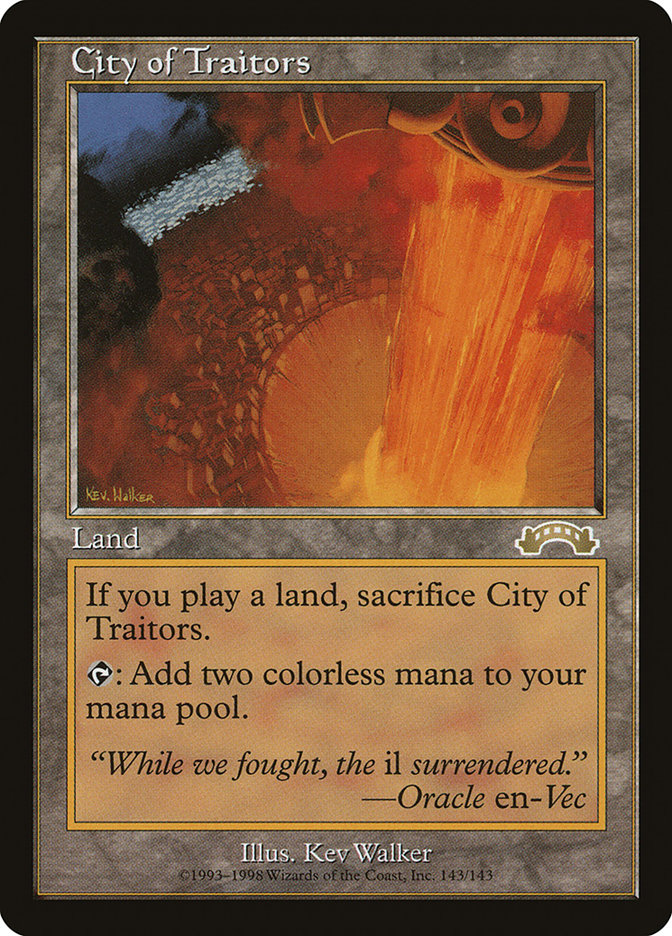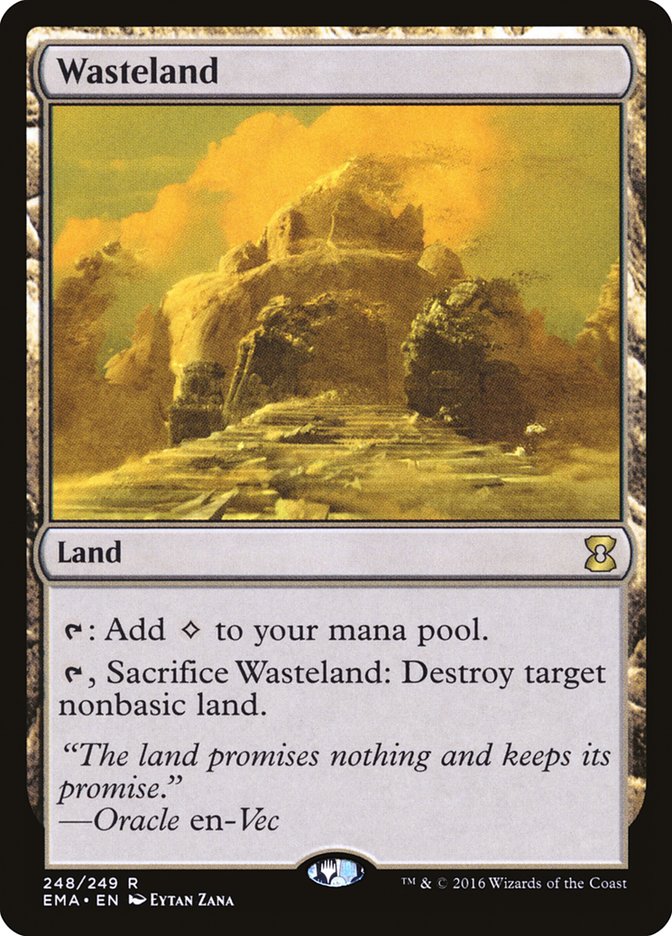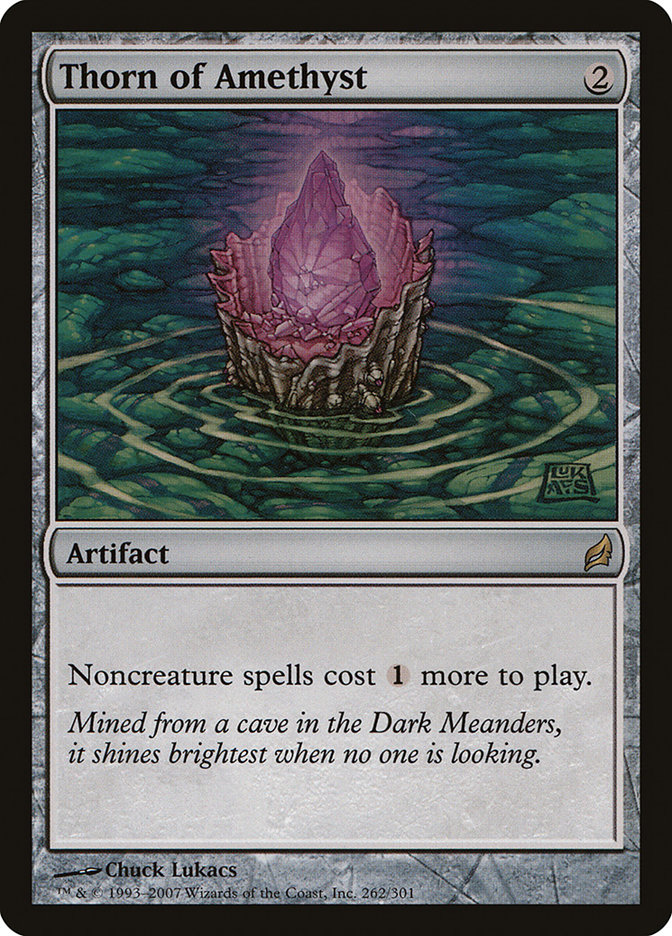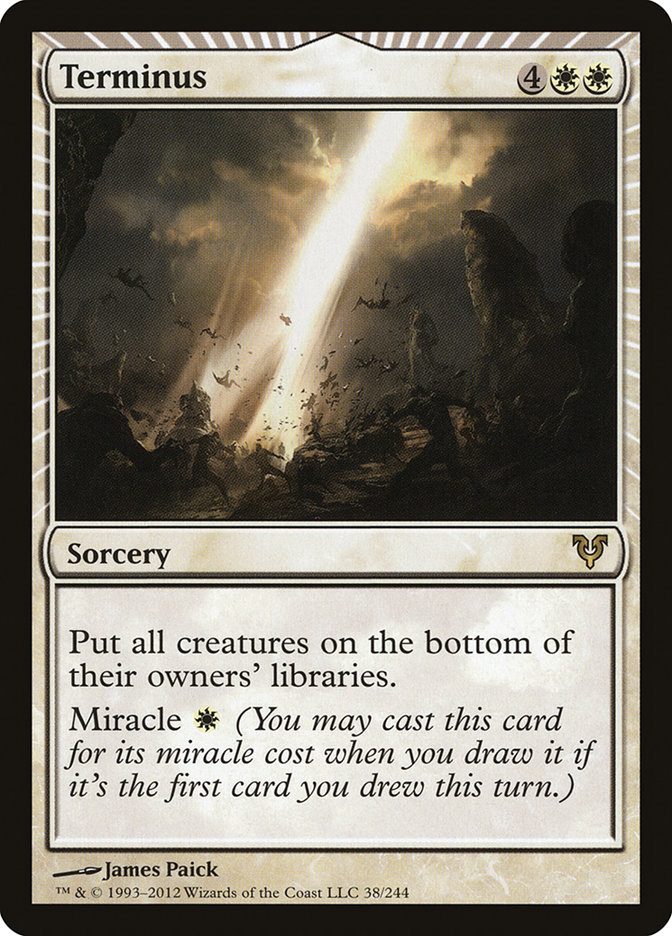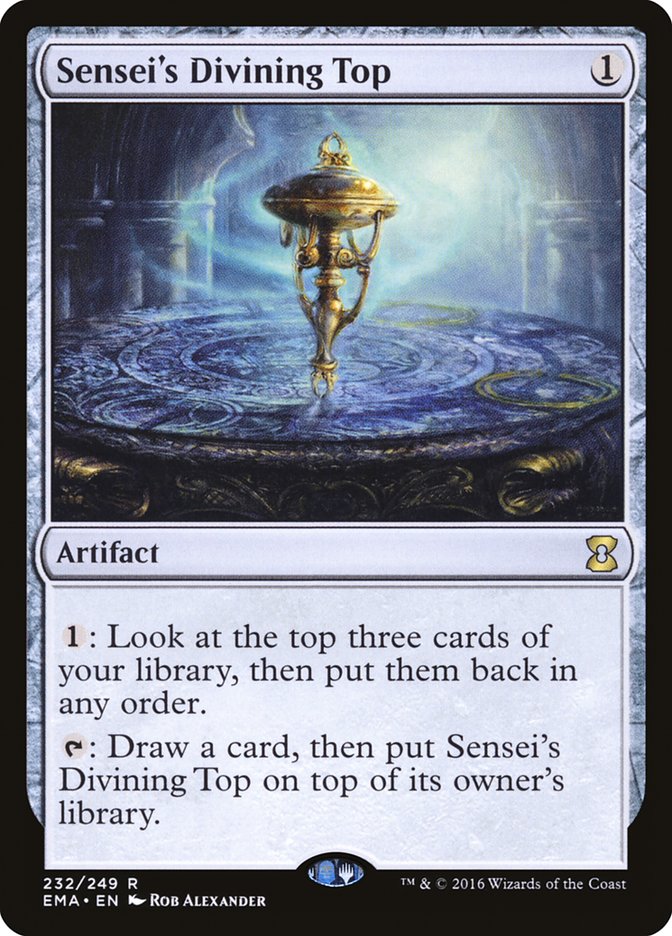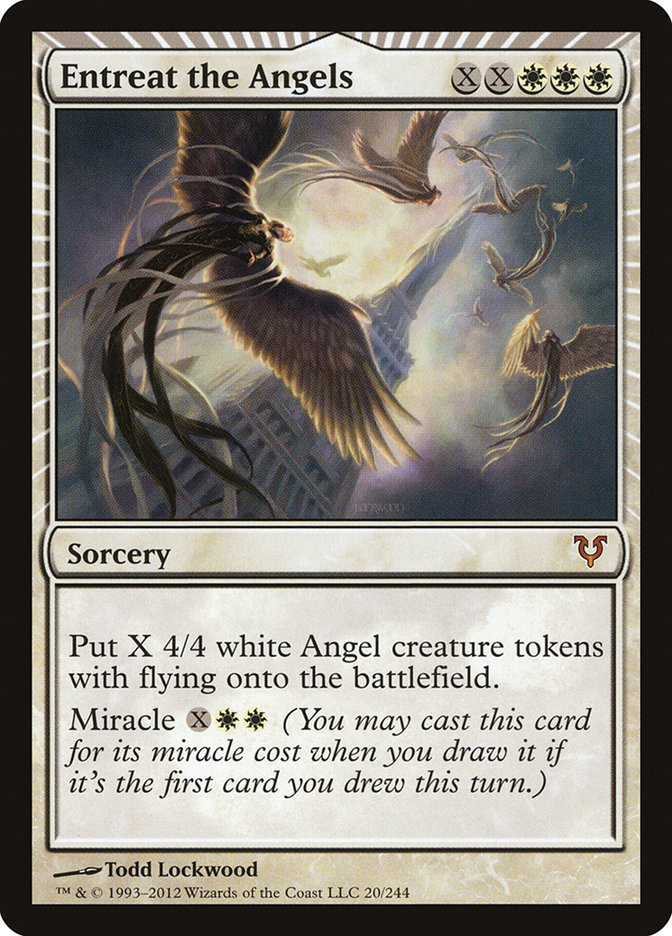“Oh, you have to play Storm.”
“Miracles is the deck to play in Legacy. Definitely the best deck.”
“If you’re new to the format, you have to play Eldrazi.”
I’ve heard these things said a lot in the last few weeks in the lead-up to Grand Prix Columbus. There is an explicit prescription in each of the pronouncements: you have to do something is what people are told, even if those words aren’t actually invoked verbatim.
Here’s the reality.
Legacy is such a wild, incredible format, there is no deck that basically anyone should be told they have to play. Well, there is one exception…
The Deck You Have to Play
If you need to be told what to play, check out this.
I’ll let you check out that link. Take your time…
…
…
…
…
…
…
…
…
…
The real answer is simple: whatever you know best is what you should play in Legacy.
There are years of successful decks to choose from, and even decks that are many years old are often basically completely ready to play in the current Legacy, albeit with minor updates. Sure, some archetypes are potentially unplayable in the exact moment of whatever “now” you’re playing in, but sometimes, all they need is a single new card to be back on the map, or another deck to have a single new card to prey upon the deck or card that is making that deck be suppressed.
In Legacy, what matters more than choosing a particular prescribed deck is instead choosing a deck that is both (a) rational, and (b) something you can play well.
Any deck that is improperly built will be bad. If a deck is properly built, it can probably be a great deck choice.
Much, much more important, though, is something that you can play well.
In any match of Legacy, moreso than any other constructed format, whichever player is more prepared for that matchup is overwhelmingly likely to win.
Truly properly playtesting formats as big as Legacy is basically impossible, even for a huge team. The format includes so many rational, good decks that the combination of matchups to play out is not only wildly huge, but people tend to specialize in a deck because the format rewards specialization. This means that particular metagames are going to be very different because of the individual human beings who live in an area.
Yes, there have been moments where an archetype wildly dominates, but these tend to be rare and not long-lasting. Survival of the Fittest, Gush, and Flash were all banned for good reasons.
If you’re going to picture what Legacy is like, imagine some fantasy gladiatorial arena or a well-balanced fighting game (if you’d ask Rashad Miller, I suspect he’d say “Imagine Street Fighter II Turbo“); even if some fighters are slightly stronger, essentially every fighter has good reasons to be bet upon. For the old fogeys in the house, the Jedi Master of playing Balrog can probably crush a Master Ken or Ryu player, even though Balrog is widely considered among the worst of characters and Ken or Ryu considered among the best. Jedi Masters of Legacy can take disadvantaged decks that they know well and utterly crush players playing “better” decks,
simply through the small edges they can produce over numerous games.
The Rock-Paper-Scissors Fallacy
People who don’t play much Legacy tend to think that the format is a format of turn 1 decks. In their minds, these basically turn the format into a game of Rock-Paper-Scissors. The turn 1 decks push all of the other decks around, except for a certain subset that beat them, which, in turn, are beaten by another subset.
If we look at the most recent Legacy Classic on the SCG Tour®, you can see that this isn’t true. The Top 8 in Atlanta looked like this:
First of all, not only is this Top 8 indicative of one of my favorite things about Legacy, the incredible diversity of the format, but it also showcases something else. Yes, that turn 1 deck can exist, represented here by Goblin Charbelcher, but most of these decks have to take their time to win.
Also, importantly, heretofore unknown or obscure decks can totally take things down. Take “Tezzerator” decks, for example.
If you look it up, you’ll see just how many Tezzeret, Agent of Bolas decks have done well as of late. Spoiler: it ain’t many.
But check out this work of art from this Top 8:
Creatures (4)
Planeswalkers (6)
Lands (22)
Spells (28)

In many ways, this deck plays out like a prison deck with some elements of a more traditional control deck. Regardless of how you want to classify it, there is room to do something no one else is doing, if and only if it makes sense.
Take this deck, the Prison deck I took to 32nd place way back in 2007 at GP Columbus when Flash Hulk was legal.
Creatures (6)
Lands (19)
Spells (35)

There had never been a Prison deck that had been built like this before the event. I would have done even better, but I punted and accidentally messed up an obvious play to utterly stop my Flash opponent from winning. I should have gone on to Top 16 or better, but more importantly, the format itself allowed me to play this utterly crazy deck, simply based on the fact that it was powerful, rational, and well-positioned.
Three years later in Columbus, at another Legacy event, I would play this:
Creatures (1)
Planeswalkers (4)
Lands (23)
Spells (32)
- 4 Brainstorm
- 4 Counterspell
- 4 Force of Will
- 2 Gaea's Blessing
- 2 Island
- 2 Vedalken Shackles
- 1 Crucible of Worlds
- 4 Pernicious Deed
- 3 Fact or Fiction
- 4 Innocent Blood
- 2 Ghastly Demise
Sideboard

The most popular decks of that moment in Legacy were Goblins, Merfolk, Landstill, and various Tarmogoyf decks with Force of Will. At the time, this was my newest take on one of my signature decks, recursive control, aka The Baron, and it did pretty well. It wasn’t nearly as well-positioned, and I don’t think I deserved to place much higher than I did; looking at the deck with more understanding of how Legacy works, I know that I was piloting the deck with the wrong frame of mind in many situations.
I don’t bring up these decks to celebrate them, but rather to celebrate the format. These weren’t decks that even existed in Legacy before those respective weekends, and because the essence of the deck was good and they were within my wheelhouse to pilot, they could compete. Sean O’Brien’s Top 8 finish with Grixis Tezzeret is another example of that on display. This is not a land of Rock-Paper-Scissors.
Certainly, there have been moments where a deck wildly dominated, but those moments get responded to. Witness the banning of Dig Through Time.
The Most Dangerous Card in Legacy
No, it isn’t Dark Ritual or Lightning Bolt.
A lot of people cite this card as the biggest problem in Legacy, simply because it is so ubiquitous. While I disagree that it is a problem (a fight we can get into elsewhere), here is the simple truth about Brainstorm:
More people lose games casting Brainstorm than any other card.
If you aren’t very experienced piloting the deck you’re choosing to play in Legacy, casting Brainstorm is one of the best ways to lose the game. Simply put, there are an incredible number of choices that the card subjects you to. In a format as powerful as Legacy, each of these choices can be game-losing.
What do I mean by this?
Pretend you are empty-handed and you draw Brainstorm. You decide to cast it. With those three cards, you have to decide to put two cards back in a particular order. This means you have six potential ways to resolve the Brainstorm. You can see this if we imagine the cards as Card A, B, and C, and the order we place them is card in hand, card on top, card one down from top:
ABC
ACB
BAC
BCA
CAB
CBA
This means, at its simplest, with three unique cards, only just more than 15% of potential choices with Brainstorm are correct. Even if you are desperate, and the card you have to take is obvious, there is a 50/50 shot of placing the other two cards incorrectly if you are just guessing.
Introduce only a single additional card, and you are at twelve potential ways to resolve Brainstorm. If you have seven cards when you cast the Brainstorm, there are 72 ways to resolve the Brainstorm. In many games, resolving this Brainstorm properly is the difference between winning and losing that game (and thus that match).
If you are going to play a deck with Brainstorm and you don’t know the deck you’re piloting, choose another deck. Do yourself that favor.
While many think Brainstorm is bad for the format, it is so hard to play properly, I am glad it is in Legacy, and I think it contributes to the format being so rewarding of players knowing their deck and the format.
So I Don’t Know the Format – What Should I Play?
This question is a hard one to answer, simply because there are so many great decks. But I do have some answers for you.
If you’re completely new to the format, I’d suggest you play Merfolk.
Creatures (22)
- 4 Lord of Atlantis
- 4 Silvergill Adept
- 4 Cursecatcher
- 2 Phantasmal Image
- 4 Master of the Pearl Trident
- 4 True-Name Nemesis
Lands (8)
Spells (30)

One of the most important reasons I’d suggest Merfolk for the player unfamiliar with Legacy is that it has a straightforward gameplan. You are attacking, and more lords are good. Quite simple.
Also, importantly, you have resistance to the insane plays possible in Legacy.
If you’re running around without Force of Will, you can win in Legacy, but Force of Will does make playing the game much easier. Even though Force of Will has an incredibly huge cost (tossing a card is nothing to throw a shoe at), and even though determining what card is worthy of a Force of Will can sometimes be difficult, simply put, Force of Will acts like a crash helmet in a demolition derby.
While a true aggro-control deck like Legacy Merfolk is among the most difficult strategic archetypes to play, Merfolk has some advantages, given that there are few cards that control decks will test you with and it is pretty apparent how to fight them. In addition, this is a blue deck without the skills-testing horror that Brainstorm puts forth.
The next deck I’d suggest for the Legacy newbie is a bit more difficult but only requires a little bit of help from a Legacy tutor to get down.
Creatures (9)
- 1 Hapless Researcher
- 1 Tidespout Tyrant
- 1 Inkwell Leviathan
- 1 Iona, Shield of Emeria
- 1 Elesh Norn, Grand Cenobite
- 4 Griselbrand
Lands (15)
Spells (36)
- 4 Brainstorm
- 4 Force of Will
- 4 Reanimate
- 1 Animate Dead
- 1 Island
- 4 Exhume
- 3 Daze
- 4 Entomb
- 4 Careful Study
- 4 Lotus Petal
- 3 Izzet Charm
Sideboard

This deck basically has a few very, very powerful choices to make: first, how to get something incredible onto the battlefield for almost no mana, and second, how much life to lose with Griselbrand.
In many ways, this deck is reminiscent of the old Trix deck from Extended almost twenty years ago.
Basically, all of that is captured in the body of one critter:
First stage: say no to anything scary. Second stage: put onto the battlefield either a Griselbrand or a card that you know will cripple your opponent. After that, if Griselbrand is on the battlefield, third stage: do the first two again until your opponent dies.
Yes, hate cards exist for the graveyard, but your sideboard plan is pretty simple as well. If you suspect graveyard hate, show them what you have to say about it:
If you’re a bit more experienced with Magic in general and really good at being patient, I have another suggestion:
Creatures (12)
Lands (18)
Spells (30)

In this, I’d definitely make sure you played Sylvan Library. This deck can kill someone very quickly but also is the best overall Force of Will deck in the format, in my opinion. This is, in large part, due to its ability to make any moment the decisive moment where a player can be killed, mixed with its ability to simply nickel-and-dime someone to death. Thus, you can force a game-ending play with counterspell backup (similar to a combo deck) or you can simply wait out the threatening cards of the opponent by stopping the cards that matter (like a classic aggro-control deck).
If you need evidence of how awesome it is, the evidence is out there. This deck is utterly unfair against any deck trying to be more controlling than it, and it is also cruel to the point of absurdity versus other combo-style decks. If you have played it in Modern, the deck’s ideas translate fairly well while getting supercharged.
In addition, any opportunity you have to play Gitaxian Probe in formats this powerful, I’d take.
Also great in the format for players that had experience playing a lot of Modern, but not yet much in the way of Legacy, is this absurdity.
Creatures (22)
- 2 Phyrexian Metamorph
- 4 Endless One
- 4 Eldrazi Mimic
- 4 Reality Smasher
- 4 Thought-Knot Seer
- 4 Matter Reshaper
Lands (25)
Spells (13)

In essence, this is the Modern deck on steroids.
These are all absurd cards, but in Legacy, many players simply aren’t accustomed to dealing with the huge size of creatures you can produce, all while disrupting the opponent and generally being a meanie-face. Since the deck doesn’t have any countermagic (other than the occasional Warping Wail on a sorcery), your decisions in terms of interaction are all about determining how to deploy your threats and disruption.
Figuring out when to deploy each of these cards is the real challenge of the deck. The mere existence of this deck makes, much like it did in Modern, the choice of some decks to play Lightning Bolt seem almost quaint.
If you’re an expert in combo or control, but you haven’t played Legacy, there are two decks for you. However, I’d only recommend these decks for players extremely well-versed in either the strategic archetype of “control” or Storm-based decks in general.
First, for the Storm player, Legacy has you covered.
Lands (14)
Spells (46)

It might seem simple to just “cast the Rituals and win,” but don’t get complacent. The technical challenges of this deck aren’t insurmountable, but they do require a player to really understand the pathway you need to create to make a victory happen. Sam’s build also includes Cabal Therapy, which demands that a player know what they have to fear (although Duress and Gitaxian Probe can help you sneakily avoid that dilemma).
You can’t simply take your Modern Storm knowledge and translate it exactly into Legacy Storm wins, simply because the ability of other decks to resist you is real. However, a talented Modern Storm player (or a rusty Legacy Storm player) can take that knowledge to victory. Just make sure that you take the time to get in some small amount of practice so that you can properly manage all of the idiosyncrasies of the deck.
Creatures (5)
Planeswalkers (3)
Lands (14)
Spells (38)

Miracles became a real contender pretty much the moment Avacyn Restored was printed. For the control player, this deck is a glorious monster. Terminus is an utterly stupid card as a one-mana instant, and setting up that situation is surprisingly easy.
As far as control decks go, in the history of control decks, this is one of the most powerful that has ever existed. It does, however, have one major problem that needs to be addressed before I’d ever recommend someone play it:
The clock.
Sensei’s Divining Top is a killer when it comes to the round clock. If you aren’t good at efficiently managing your time, Top will wreck you. If you aren’t good at playing with Top quickly, the act of mistakenly putting the wrong card on top with a Top could end up causing plenty of match losses.
Entreat the Angels is absolutely capable of ending the game in short order, but it is also very, very easy to simply run out of time if you aren’t properly piloting this deck. Control is one of my favorite archetypes, but I can tell you, there were an incredible number of matches I covered for SCGLive where the Miracles player did not finish in a timely manner, simply because their physical mechanics weren’t crisp enough or their ability to manage their library manipulation wasn’t strong enough.
If you are inexperienced at Legacy, don’t pick up this deck cold unless you are a master of control. If you are, this could well be an excellent choice.
Grand Prix Columbus!
I’m excited to be heading back to Columbus for another Legacy Grand Prix. There are a few decks I’m personally considering right now. Within a few cards, I’m considering these decks:
Creatures (26)
- 4 Mother of Runes
- 2 Mangara of Corondor
- 3 Flickerwisp
- 4 Stoneforge Mystic
- 4 Phyrexian Revoker
- 4 Thalia, Guardian of Thraben
- 1 Vryn Wingmare
- 4 Eldrazi Displacer
Lands (12)
Spells (22)

Creatures (9)
Lands (21)
Spells (30)

Creatures (8)
Lands (19)
Spells (33)

Creatures (14)
Lands (12)
Spells (34)

In the meantime, I’d suggest watching one of my favorite matches of Legacy. It features two great fellows being great. Enjoy!
I’ll see you at #GPCOL!


